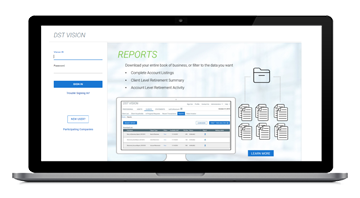Tax-loss harvesting: the silver lining in a market drawdown
What is tax-loss harvesting? It’s a tax-efficient investing approach that involves selling selected investments from a portfolio at a loss to help offset the negative tax impact from other holdings that are sold at a profit and therefore generate taxable capital gains.

This article was originally published in June 2022. Updated October 2023.
Stock market downturns are painful, but setbacks can present opportunities for those with taxable investment accounts. Investors can consider reducing their taxable exposure from capital gains through tax-loss harvesting. Eligible investments aren’t limited to stocks or stock funds; losses from bonds and other asset classes can be used to offset taxable capital gains as well.
For investors in mutual funds or exchange-traded funds—as opposed to individual securities—capital gains are triggered as portfolio managers sell holdings that have appreciated in value, based on the difference between the purchase price and subsequent sale price. The fund’s shareholders share the tax burden in the same calendar year that the net gains were realized.
Tax-loss harvesting applies only to assets held in taxable accounts; in other accounts such as IRAs and 401(k)s, assets grow tax deferred1 and aren’t subject to capital gains taxes in the year they occurred. The tax impact can be especially big for taxable account holders with high incomes that place them in the three top-tier tax brackets paying rates of 32%, 35%, and 37%.
The potential benefits of tax-loss harvesting
While tax-loss harvesting can be complicated, it can be simple in other respects. For example, assume a fund holding that declined in value can be sold to generate a pretax loss of $10,000. That loss may in turn fully offset the net capital gain exposure from the sale of another holding whose value increased by $10,000.
Moreover, losses may be used to help limit tax exposure from noninvestment, ordinary income such as wages, as well as to offset investment gains. Under current law, a capital loss deduction allows an investor to claim up to $3,000 more in losses than in capital gains, meaning investors can reduce their taxable income dollar for dollar, up to that $3,000 limit. (The limit is $1,500 for a taxpayer who's married and files separately.)
However, any investor selling securities as part of a tax-loss harvesting strategy should trade cautiously. An IRS restriction known as the wash sale rule makes it difficult to realize a short-term benefit from quickly getting back into a mutual fund or security after selling the investment at a loss; the loss can't be deducted unless an investor waits at least 30 days to reinvest in that same investment.
Finding a potential upside in a bear market
The possibilities from tax-loss harvesting become more plentiful as the market’s drawdown deepens. This was the case, for example, in June 2022, when the S&P 500 Index entered a bear market—that is, when its decline from its high point in January 2022 exceeded 20%. As a result, investors had more equity holdings in their portfolios that had generated losses, making them potential candidates to sell to help offset potential gains from other holdings that had appreciated. A similar opportunity arose in February 2020 in the early days of the coronavirus pandemic. (That particular bear market was brief, lasting just over a month before a rapid recovery rally triggered a new bull market.)
Where to search for today’s tax-loss harvesting opportunities
While the market’s ups and downs don’t necessarily mean it will end a given year on a sharply negative note, market declines can sometimes build momentum, creating opportunities to potentially harvest losses across different sectors, particularly in equity sectors that display underperformance. Bonds can also sustain substantial losses—for example, when they become more vulnerable in an environment of rising rates. It’s worth consulting a financial professional to discover the most fertile areas of your portfolio to target when searching for holdings that may present tax-loss harvesting opportunities.
What to look for in the months ahead
Around October or November, asset managers typically provide notices to fund shareholders to aid in year-end tax planning. These notices, as well as online disclosures, indicate which funds are expected to pay gains by year end—based on market performance at the date the estimates are made, typically through the end of September—and provide estimates of the amounts of those expected gains as well as funds’ estimated income distributions from dividends, interest, and other net income.
Although this preliminary information is subject to market movements in the closing months of the year, early estimates provide an opportunity to evaluate potential tax liability and, if merited, adjust accounts accordingly through strategies such as tax-loss harvesting. While asset managers typically don’t distribute late-year estimates of funds expected to generate losses, identifying such funds isn’t difficult. Year-to-date performance figures are widely available on the websites of asset managers and research firms, as mutual funds are required to publish share prices each business day.
A good time to check in with your financial or tax professional
Surges in market volatility may ultimately prove to be mere bumps in the road for investors who stay in the market for the long haul. However, now may be a good time for investors with taxable accounts to check in with a financial professional to review investment goals and discuss tax-loss harvesting opportunities. Professional advice can be especially valuable when it comes to something as potentially complex as tax-loss harvesting, as there’s no guarantee that such a strategy will achieve any particular tax outcome or that it will be in an investor’s best interest over the long run. As always, the John Hancock Investment Management tax center has resources designed to help make your tax planning easier, including our latest tax planning guide, tax forms, and more. The power of professional advice and solid information can go a long way toward helping to maximize an investor’s tax efficiency.
1 Tax deferral postpones the payment of taxes on asset growth until a later date—meaning 100% of the growth is compounded and won’t be taxed until withdrawn, usually at age 59½ or later, depending on the type of account or contract. Withdrawals from tax-deferred accounts are subject to ordinary income tax and, if made before age 59½, may be subject to a 10% penalty tax.
Important disclosures
Important disclosures
This material does not constitute tax, legal, or accounting advice and neither John Hancock nor any of its agents, employees, or registered representatives are in the business of offering such advice. Please consult your personal tax professional for information about your individual situation. The views and opinions on this site are subject to change and do not constitute investment advice or a recommendation regarding any specific product or security. John Hancock Investment Management and its representatives and affiliates may receive compensation derived from the sale of and/or from any investment made in its products and services.
The S&P 500 Index tracks the performance of 500 of the largest publicly traded companies in the United States. The NASDAQ Composite Index is a market-value-weighted index that tracks all stocks listed on the NASDAQ Stock Market. It is not possible to invest directly in an index.
Diversification does not guarantee a profit or eliminate the risk of a loss. Investing involves risks, including the potential loss of principal. See a fund's prospectus for more details. Past performance does not guarantee future results.
MF3177353





